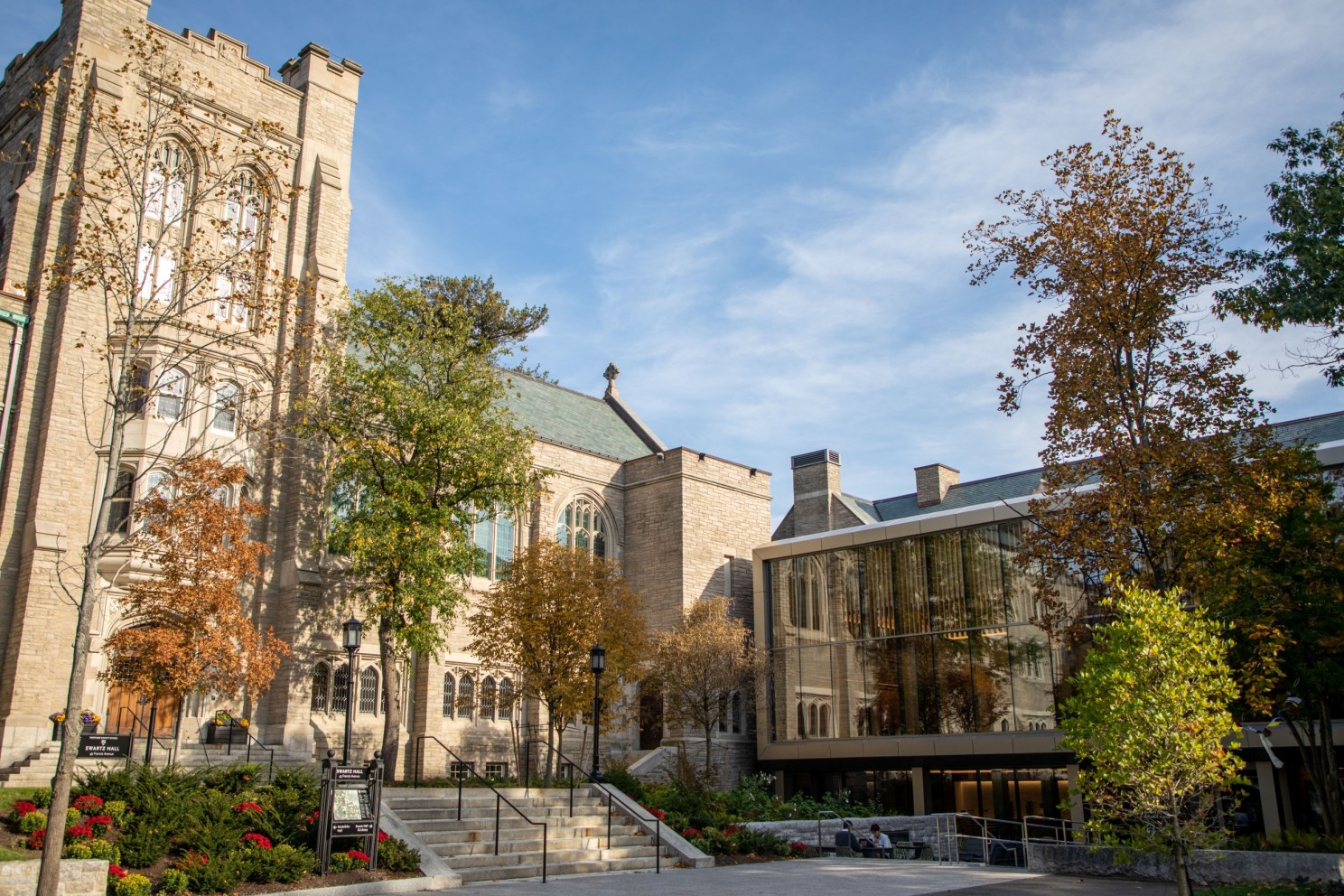Harvard Divinity’s Swartz Hall recognized with LEED Platinum status

Swartz Hall on the HDS campus is the School’s main campus building. Photo by Kristie Welsh/HDS
At the intersection of where new meets old, and style meets sustainability, you will find Harvard Divinity School’s recently renovated main campus building — Swartz Hall. The elegant addition bridges the space between the original, century-old chapel and the new student classrooms and event space in a way that is at once modern and traditional.
The architecture is not the only thing of note, as Swartz Hall has been awarded LEED Platinum certification, the highest level designated by the U.S. Green Building Council (USGBC) for healthier buildings.
“Among the Divinity School’s core values are care of our environment and advancing a more sustainable future,” said HDS Dean David N. Hempton. “Achieving LEED Platinum is a testament to the thoughtful, deliberate planning and actions taken during the renewal of Swartz Hall to create a space that embodies those values. I am so grateful for all those individuals who worked so hard to surpass our sustainability goals and produce a building that our community—and future generations—will benefit from.”
Swartz Hall underwent a total renewal from 2019 through 2021, thanks to lead gifts from artist and philanthropist Susan Shallcross Swartz and her husband, investor James R. Swartz ’64, Ralph James, M.B.A. ’82, HDS Executive Education ’18, HDSEE ’19, Cathy James Paglia, and the Robert and Ardis James Family Foundation, as well as other generous donors. The extensive work included installing efficient heating, ventilation, and air conditioning to significantly reduce energy consumption; emphasizing the use of healthier building materials to reduce the use of key chemicals of concern, such as PFAS “forever chemicals” and chemical flame retardants; diverting at least 75 percent of construction and demolition waste from landfills; reusing original granite for fireplaces; retrofitting new high-performance windows; and landscaping the area around the building with more than 50 trees and shrubs.
The renewal of Swartz Hall was the first major upgrade to the building since it was constructed more than a century ago. Harvard University’s only example of collegiate-Gothic architecture, Swartz Hall is at the center of HDS’s campus and contains modernized classrooms for flexible teaching and learning, faculty and staff offices, a café, numerous spaces for impromptu collaborations, a new multifaith space and adjacent ablution room, and the Preston N. Williams Chapel.
LEED (Leadership in Energy and Environmental Design), developed by the USGBC, is the most widely used green building rating system in the world and an international symbol of excellence. Through design, construction, and operations practices that improve environmental and human health, LEED-certified buildings proactivily promote sustainability.
Swartz Hall joins 144 other LEED-certified buildings on Harvard University’s campus, including 24 other LEED Platinum certified buildings. The sustainability measures taken as part of the Swartz Hall renewal will help advance the University’s effort to combat climate change and to make Harvard a fossil-fuel-free campus by 2050. Harvard University has had sustainable building standards in place since 2009.




